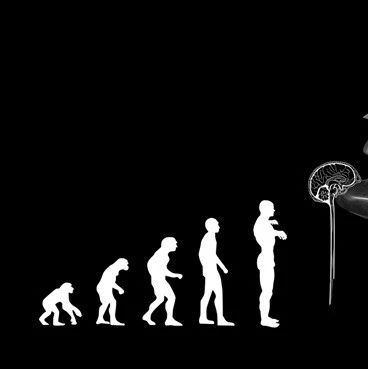来自佐治亚理工学院,埃默里大学等处的研究人员发表了题为“Anti-Invasive Adjuvant Therapy with Imipramine Blue Enhances Chemotherapeutic Efficacy Against Glioma”的文章,发现两种药物联合使用,能阻止脑癌或神经胶质瘤的扩散,延长病患生命,这一成果公布在《科学—转化医学》(Science-Translational Medicine)杂志上。
文章的作者,佐治亚理工学院教授Ravi Bellamkonda表示,“这项研究表明丙咪嗪蓝(imipramine blue,IB)能阻止肿瘤侵入健康组织,并加强化疗的作用,这说明当靶标是静止状态的时候,化疗效果也许更好”,“这些结果揭示了一种治疗脑癌更有效方法的策略。”
近年来,脑癌的发病率呈上升趋势,其中以恶性胶质瘤和转移性肿瘤这两种最常见,且恶性程度最大。胶质瘤的特点是侵袭性强,容易复发,即肿瘤手术切除后,又会不断生长出来;转移性肿瘤的特点是癌细胞容易扩散,扩散到脑袋里,就是脑癌。
传统的化疗几乎没有可能治疗脑胶质瘤这种通过入侵周围健康脑组织而快速生长的侵袭性的脑肿瘤。大多数的脑胶质瘤患者会在诊断后几年死于该疾病。癌细胞会迁徙到远离原发肿瘤的位置,这使得脑胶质瘤难以用手术和化疗来治疗。
在这篇文章中,研究人员发现了丙咪嗪蓝IB可以阻止脑癌或神经胶质瘤的扩散,而且当这种药物与常用抗癌药阿霉素(doxorubicin)联合使用的时候,实验大鼠的寿命得以延长。丙咪嗪是一种治疗抑郁症的药物,单对精神分裂症伴发的抑郁状态则几乎无效或疗效差,也可用于小儿遗尿症。
丙咪嗪蓝IB是这一研究组新研制的化合物,并且研究人员还设计了一种可将IB轻易地递送给组织,但不会损伤组织或触发炎症的方法。具体来说,就是研究人员将药物装入脂质体中,脂质体是一种由脂质制备的可帮助将IB输送入癌细胞的圆形囊泡。
在给患有显示有人脑癌关键性特征的一种侵袭型胶质瘤的大鼠,使用IB的脂质体之后,研究人员发现得到治疗的大鼠比对照组大鼠的肿瘤要更为密实。之后研究人员又将含有IB的脂质体与阿霉素结合,并对患病大鼠进行这一组合治疗。结果所有这些大鼠都存活了180天。相反只有33%的仅接受阿霉素的大鼠活了如此长的时间。
除此之外研究人员还分析了IB阻止癌细胞扩散的机制,提出这一是通过破坏细胞的肌动蛋白装置(细胞需要肌动蛋白纤维才能移动)而中止了胶质瘤细胞的迁徙。
这些研究结果说明这一强有力的化合物可以在更多动物模型中进行测试,也许这将成为未来治疗脑癌的强有力工具。

 CANCER NANOMEDICINE Anti-Invasive Adjuvant Therapy with Imipramine Blue Enhances Chemotherapeutic Efficacy Against Glioma
CANCER NANOMEDICINE Anti-Invasive Adjuvant Therapy with Imipramine Blue Enhances Chemotherapeutic Efficacy Against Glioma
Jennifer M. Munson, Levi Fried, Sydney A. Rowson, Michael Y. Bonner, Lohitash Karumbaiah, Begoña Diaz, Sara A. Courtneidge, Ulla G. Knaus, Daniel J. Brat, Jack L. Arbiser and Ravi V. Bellamkonda
The invasive nature of glioblastoma (GBM) represents a major clinical challenge contributing to poor outcomes. Invasion of GBM into healthy tissue restricts chemotherapeutic access and complicates surgical resection. Here, we test the hypothesis that an effective anti-invasive agent can “contain” GBM and increase the efficacy of chemotherapy. We report a new anti-invasive small molecule, Imipramine Blue (IB), which inhibits invasion of glioma in vitro when tested against several models. IB inhibits NADPH (reduced form of nicotinamide adenine dinucleotide phosphate) oxidase–mediated reactive oxygen species generation and alters expression of actin regulatory elements. In vivo, liposomal IB (nano-IB) halts invasion of glioma, leading to a more compact tumor in an aggressively invasive RT2 syngeneic astrocytoma rodent model. When nano-IB therapy was followed by liposomal doxorubicin (nano-DXR) chemotherapy, the combination therapy prolonged survival compared to nano-IB or nano-DXR alone. Our data demonstrate that nano-IB–mediated containment of diffuse glioma enhanced the efficacy of nano-DXR chemotherapy, demonstrating the promise of an anti-invasive compound as an adjuvant treatment for glioma.
文献链接:https://stm.sciencemag.org/content/4/127/127ra36.abstract







